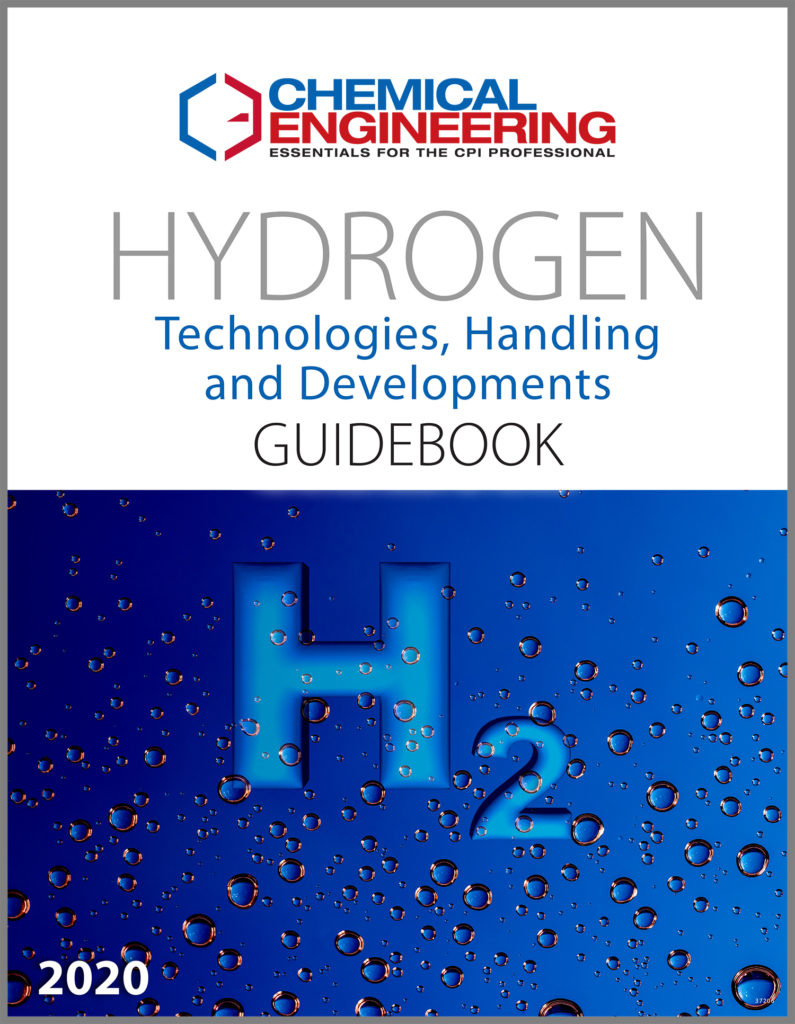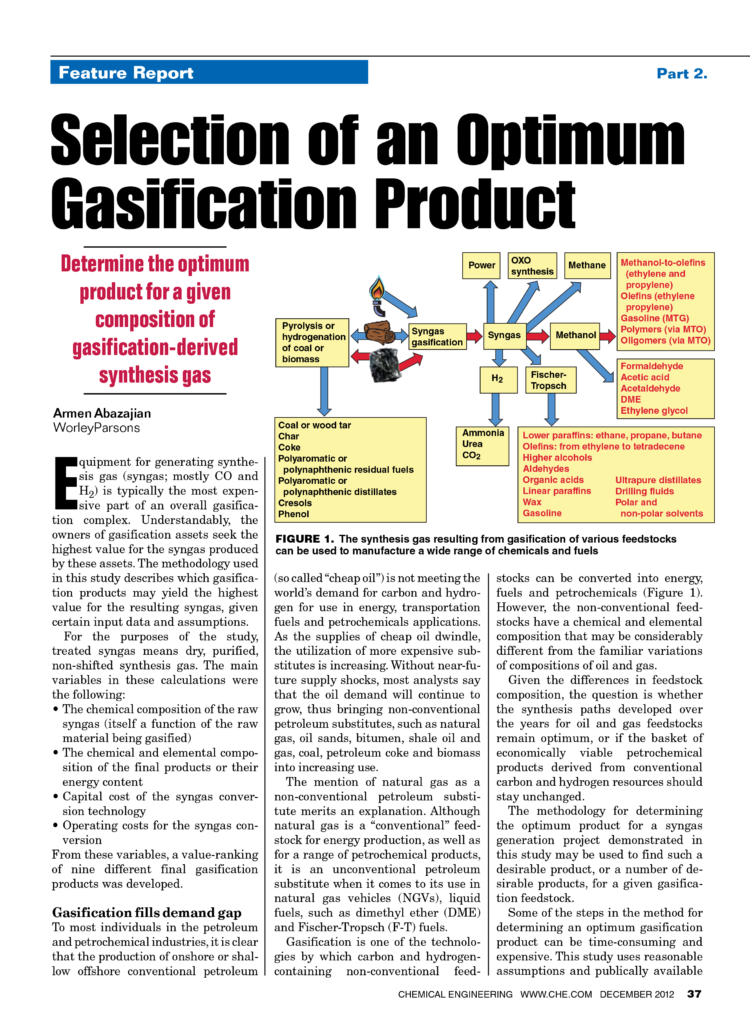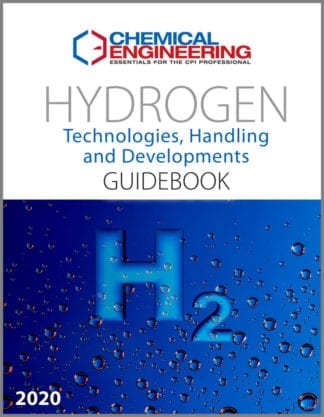Description
While hydrogen has always played an important role in the chemical process industries (CPI), it has gained much interest recently for its potential as a “green” fuel source. Decarbonization targets, along with improved technologies are driving a myriad of activities around hydrogen.
This Chemical Engineering resource is a compilation of full-length articles, news stories and short technology write-ups related to hydrogen production, handling and emerging technologies. It includes both recent developments, and practical articles from the past that are still relevant today.
Although much of the excitement today is about “green hydrogen” (produced by the electrolysis of water using renewable energy sources, such as solar, wind and hydroelectric) and “blue hydrogen” (produced using non-renewable energy sources, such as nuclear), we should not ignore the fact that “grey hydrogen” (produced using fossil fuels, such as natural gas, naphtha and coal) is still the dominant type of hydrogen produced and used by the CPI today. Therefore, deciding which type of steam reformer to use for supplying your hydrogen needs is still very relevant, and is masterfully discussed in the Feature Report on pp. 23-29. The same can be said for hydrogen-purification methods (pp. 15-22). And for sure, safe handling of this important gas will be the same, regardless of whether your hydrogen is grey, blue or green.
Delivered in a PDF format. 99 Pages.
Topics Include:
Part 1: Technical and Practical
Production and Purification Selection of an Optimum Gasification Product Determine the optimum product for a given composition of gasification-derived synthesis gas
Hydrogen Production By Steam Reforming Management of the gas is critical for petroleum refiners
Pressure Swing Adsorption Technology Pressure swing adsorption technology is well known for H2 purification applications, but the technique can also be used for other gas-separation processes in petroleum refining facilities
PSA Technology: Beyond Hydrogen Purification Pressure swing adsorption technology is well known for H2 purification applications, but the technique can also be used for other gas-separation processes in petroleum refining facilities
A Guide To: Methane Reforming A wide range of factors must be taken into account before selecting the most appropriate reforming technology
Part 2: New and Emerging Technology
Safety and Handling How to Handle Hydrogen In Process Plants Process-unit layout, piping, instrumentation/control and materials of construction are but a few of the technical issues requiring special attention during the design or retrofitting of process plants that use hydrogen as a raw material
Know Your Hydrogen- Supply Options The best delivery method for your process unit depends on your plant location, and on the amount and purity of hydrogen you need
Detection Systems for Reducing the Risk of Hydrogen Fires Today’s detection equipment can provide early sensing of H2 gas and flames, provide alarm information to a fire- and gas safety system controller to initiate mitigating measures, and integrate with process control to further minimize H2 fire risk
Hydrogen-Pinch Analysis Made Easy An automated spreadsheet method can quickly help minimize fresh hydrogen consumption while maximizing hydrogen recovery and reuse in petroleum refineries and petrochemical complexes
Hydrogen Pinch Analysis Made Easy (Discussion between a reader and the authors)
Driving Toward a Hydrogen-based Economy Technology developments are progressing towards large-scale production of ‘green’ hydrogen, along with improved methods for storage and transportation
Making the Most of Methane Reforming Despite valiant quests to find sustainable routes to syngas, methane reforming continues to play the lead — and ‘greener’ — role
Power-to-X: Batteries Not Required As renewable energy becomes increasingly available (and less expensive), Europeans are looking to Power-to-X as a way to couple the energy, CPI and transportation sectors
Solar Chemistry Heats Up Major efforts are underway to develop new process technology for making chemicals using sunlight and the products of combustion
65 Fuel Cells Move into the CPI
Hydrogen: The Real Action Is Today Cleaner fuels, heavier feedstocks and increased chemicals capacities are driving H2 production to its limits
Validating hydrogen embrittlement models for steel tanks
Findings suggest new design principle for water-splitting catalysts
Making renewable hydrogen for export
A Pt-free electrode promises to cut costs for fuel cells and metal-air batteries
The outlook for hydrogen as an energy carrier
Underground oxidation of hydrocarbons and gas separation yields hydrogen
This multifunctional photocatalyst splits water with visible light
Magnetism gives water splitting a big boost
Electrochemical separation and compression of hydrogen
Co-electrolysis makes ‘green’ syngas in a single step
CNT-based photocatalysts enable solar water splitting
Japan takes a major step toward a hydrogen-based economy
Advanced water electrolysis launched
A panel reactor for splitting water into hydrogen
Ceramic-membrane technology simplifies steam methane reforming
A low-temperature catalyst for dry methane reforming
Liquid metal membranes improve on Pd membranes for separating hydrogen
A catalyst for making H2 from methanol
A less expensive alternative to platinum for water electrolysis
Making H2 and graphite from methane
Making hydrogen (and carbon) by cracking methane in molten metal
Modular hydrogen-production technology uses modified SMR Process
H2 and CO2 from APG
This PEM fuel cell has H2 storage built-in
A new way to obtain hydrogen from heavy oil
A new catalyst enables lower-temperature H2 production using the sulfur-iodine cycle
Demonstration for a process that makes H2 from sewage sludge
This membrane system extracts hydrogen from mixed gas streams
A modular SMR unit provides onsite hydrogen production
‘World’s first’ commercial plant to produce biofuel from municipal waste
An enhanced photocatalyst for making H2 from water
H2 unit combines production, purification and compression
A hydrogen generator featuring longer-lasting electrodes
Molybdenum-oxo catalyst offers cheap route to H2 from water






